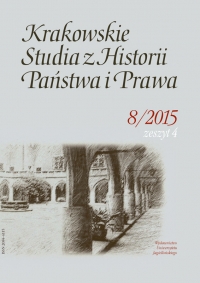The Relationship between Civil and Canon Law in the Eastern Orthodox Tradition
The Relationship between Civil and Canon Law in the Eastern Orthodox Tradition
Author(s): Wouter DRUWÉSubject(s): History of Church(es), Civil Law, 6th to 12th Centuries, Canon Law / Church Law
Published by: Wydawnictwo Uniwersytetu Jagiellońskiego
Keywords: legal history; civil law; canon law; ecclesiastical law; Byzantium; Eastern Roman Empire; nomokanones; canons; Patriarch of Constantinople; Theodore Balsamon; church-state relations;
Summary/Abstract: Theodore Balsamon, a 12th-century Constantinopolitan canonist, famously said: “Civil law punishes, canon law heals”. This paper tries to understand that statement by studying the relationship between civil law and canon law in the Eastern Orthodox tradition. From the 4th century onwards, the Roman imperial administration gave exequaturs to episcopal judicial decisions. In his novellae, Emperor Justinian considered the canons of the ecumenical councils as nomoi, which also implied that he could change canons by enacting imperial legislation. As of the 6th century, canon and imperial laws were published together in so-called nomokanones. At the end of the 9th century, Patriarch Photios formulated – for the first and last time in Byzantine legal history – the division of competences between Emperor and Patriarch. This paper argues that, though civil and canon law were separate fields with their own specific aims, the executability of their sentences remained crucially different.
Journal: Krakowskie Studia z Historii Państwa i Prawa
- Issue Year: 8/2015
- Issue No: 4
- Page Range: 343-356
- Page Count: 14
- Language: English

